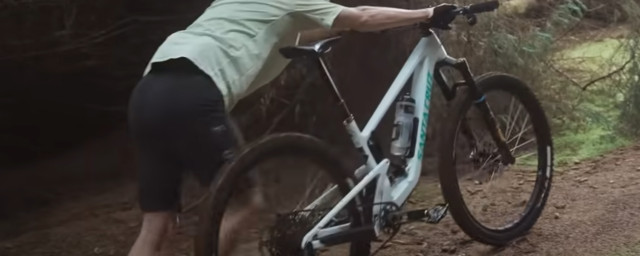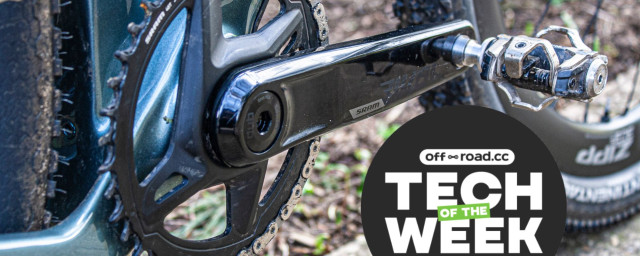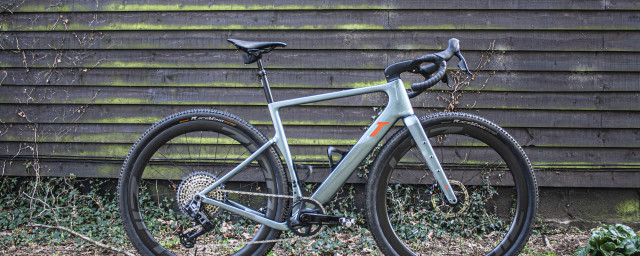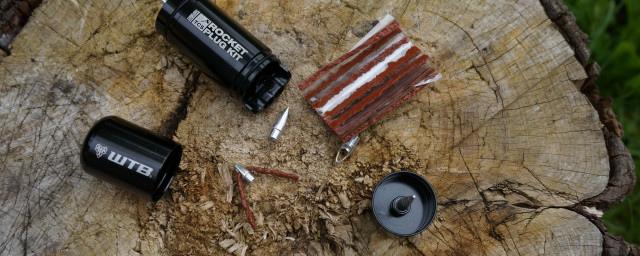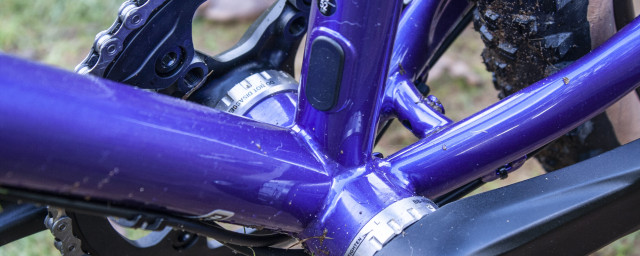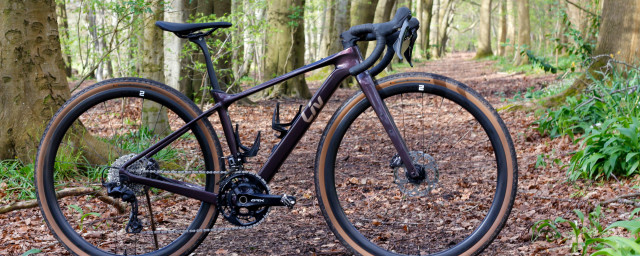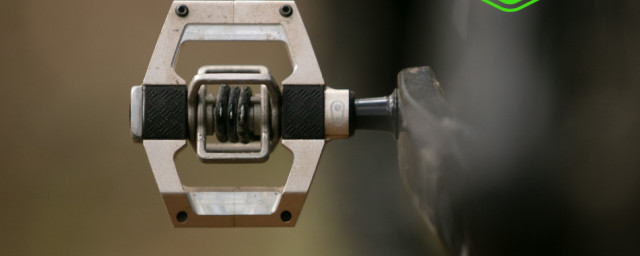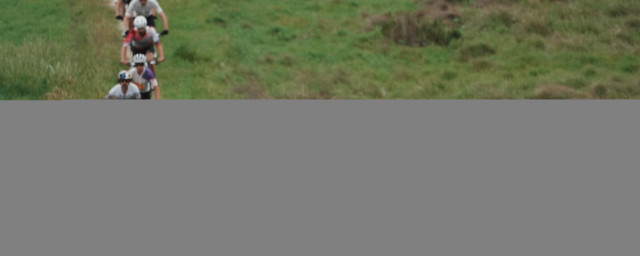A good pair of cycling shoes can make or break a ride. They help keep your feet comfortable, improve power transfer, let air in to cool your feet on hot days or keep elements out during the winter. Mountain bike and gravel shoes have various features that make them better suited, or not so well suited, to different cycling disciplines. Here we run through the individual parts of the humble shoe to help you get the one that is right for you.
- Buyer's guide to mountain bike pedals - which is best, flat or clipless?
- The best clipless mountain bike pedals ridden and rated
- When should I replace my mountain bike pedal cleats?
What is a cycling shoe?
Cycling shoes come in various forms and as we have alluded to above, some are better for some riding disciplines than others. Starting with the very basics though, cycling shoes fall into three distinct types:
Mountain bike clip-in shoes
These are usually a more rugged shoe that has a two bolt system on the sole that will accommodate cleats to allow the rider to ‘clip-in’ to the associated clipless pedal. Mountain bike shoes will have a tough sole offering good grip for walking as well as gripping larger platform pedals. They are available in a wide range of designs from casual trainer designs to sleek and stiff cross country/gravel shoes with an outer that resemble road shoes to chunkier numbers that look more like a skate shoe for enduro and downhill riding.
Mountain bike flat shoes
These shoes are a specific shoe to be used with flat mountain bike pedals. They have a flat sole with no opportunity to bolt on a cleat. The soles of these shoes are usually very tacky to grip the pins of the pedals. The design usually errs more towards the skate style of shoes as these are most often worn by trail riders and downhillers.
Road shoes
We won’t touch on these shoes too much, suffice to say they are a ‘clip in’ shoe with a three bolt mount to fit road style cleats to. They are usually very stiff to offer good power transfer, they are hard to walk in and wouldn’t be used on a mountain or gravel bike. For more on road shoes, including the best ones to buy, head over to road.cc here and read their buyer’s guide to road shoes.
Clip or Flat?
Whether you are looking to buy clip-in or flat shoes will depend on whether you choose to ride clipless pedals or flat ones. Clip-in shoes have a recess in the sole at the ball of the foot which provides room for cleats to be bolted to in order to clip into the clipless pedals.
Clip-in shoes and clipless pedals mean your feet are attached to the pedals, they are good for keeping the feet on pedals over rocky terrain and can help with pedalling efficiency too, it’s personal preference though. Cross country and gravel riders will nearly always use clipless pedals, the are pretty common on race scenes from cross county to downhill and many trail riders inbetween.
Gravel riders usually use shoes for XC riding or trail shoes that looks have a ‘cross country style’ as they are better for power transfer and are less bulky, these riders will pretty much always use clipless pedals, the shoes worn might not look dissimilar to ones work by their roadie cousins.
Flat shoes are, as you would expect – flat. They don’t have the cleat recess on the sole are designed to have sticky soles to help keep your feet planted on flat pedals. Flat shoes are generally more flexible in the sole and the upper than clip-in shoes, although there are some exceptions and have a more casual look to them. You can’t use flat shoes on clipless pedals or vice versa, the sole of a clip-in shoes isn’t designed to offer much grip on a flat pedal and similarly using a flat shoe on the smaller platform of a clip-in pedal with protruding cleat mechanism won’t be great for comfort or grip levels. You’ll find a style of shoe to fit you and your budget though whether you choose to clip-in or ride flats.
Soles
Cycling shoes usually have quite a stiff sole but this varies greatly depending on their intended use. Clip-in shoes tend to have stiffer plastic soles with rubber lugs for good grip. Soles can have carbon fibre inserts through their length or alternatively just in just the midsole to boost stiffness. A cross-country shoe like this pair of Shimano XC7 SPD shoes has a stiff sole for good power transfer on cross-county, cyclocross and gravel bikes. It has a carbon fibre reinforced midsole but it’s shoe brother, the XC9 has a rigid carbon forefoot for an even stiffer sole.
Moving away from cross country shoes other mountain bike shoes have more flexible footbeds, making them better all rounder’s for comfortable trail riding, the odd bit of walking or hike-a-biking and also offering more grip on larger platform pedals like these Crankbrothers Mallet E pedals. Something like the Giro Manta is a typical trail shoe design, it has the tidy looks of an XC shoe, it’s pretty light, fends off weather well and is stiff without being impractically so.
The Shimano ME7 and Specialized 2FO shoes are a good examples of enduro or all mountain shoes, they’ve got chunky soles for walking in, a flatter sole profile for gripping pedals and are comfortable and rugged enough to be worn on big days out in the hills whilst still being stiff enough for an enduro race.
The main difference where flat shoes are concerned is in the grippiness of the sole and the lack of cleat recess of course! This varies from manufacturer to manufacturer with the gold star award usually going to FiveTen. The soles are generally more flexible and allow more ‘feel’ on the pedals but not so much that they offer less support or are uncomfortable to wear for long periods. Some riders so say that it is possible to have a shoe that is too grippy, meaning they can’t move about on the pedals if they need to mid trail. We like a pair of FiveTens with these HT PA03 or Bontrager Line Pro pedals best.
Uppers
Cycling shoe uppers are made from many materials including real leather or suede; synthetic leather or suede; and nylon mesh. They are usually stitched together from various panels of material, but some high-end shoes have the upper moulded in one piece, which saves weight, like the Shimano XC7 shoes. Look for seams reinforced by double lines of stitching at the edges of the panels. The main body of the upper will have padding, reinforcement and stiffening in various places. We’ve found shoes such as the Specialized 2FO Cliplite Lace shoes are pretty stiff in the uppers making them a pain to get into and out of. Shoes such as the Scott MTB AR Boa Lady shoes find a good mid-point between super stiff and supportive and comfortable for all day rides. Generally speaking the more racey and XC orientated the shoes the stiffer the upper will be, the exception being those Spesh shoes so it’s best to try on first where you can.
The most significant stiffening is usually around the heel. This heel cup is shaped to hold your heel down in the shoe so it doesn’t slip on the upstroke as you pedal or as you walk. The toes are usually reinforced against scuffing, especially in shoes intended for mountain biking. There’s usually padding at the heel and top of the shoe for comfort. You also need to keep an eye out for lots of mesh and ventilation holes. Good ventilation will be great in the summer and, of course buy these shoes if you plan on only wearing the shoes in warmer weather. But beware as too much ventilation in winter will lead to cold feet pretty quickly. It was one of our complaints with the Shimano ME7 shoe.
You can buy shoes such as these Japanthers from 45NRTH which are specially designed to keep the wet and cold out so best for winter only.
Closures
In years gone by the way of doing this was with laces, but most cycling shoes now use Velcro straps, buckles, dials or some combination of these.
To start with shoes with laces will usually have a Velcro strap to cover the knot or some sort of elastic strap to hold the laces in place and tuck free end such as these Specialized 2FO Cliplite Lace shoes. Laces can be a bit fiddly, but laces allow you to spread the tension evenly over your foot, which can make them very comfortable.
Another option for shoe manufactures is to use Velcro straps, sometimes in combination with a ratchet strap or a Boa dial (see below) as on these Fizik M6B Donna shoes. There are usually two or three Velcro straps and these can be placed in an offset design to reduce pressure over the foot. Velcro is quick and easy to use and they hold the shoe firmly in place, but it is easy to overdo tightening one and end up feeling like part of your foot has been clamped, we found it hard to adjust the Velcro on the Giro Manta shoes we reviewed recently but this isn’t always the case, the Fizik shoe design worked well.
On some shoes you’ll find a ratchet buckle replacing the top strap. The advantage of a ratchet is that it’s very easy to adjust the tension as you ride, either to tighten it for a big effort or loosen it off if your feet are getting tired.
Some shoes use one or two Boa dials in conjunction with thin plastic covered steel cables or ‘laces’. The dial can be released instantly loosening the shoes and then pushed down and rotated to tighten at small increments. These are easy and quick to use but can be vulnerable to breaking in a crash, this hasn’t happened to us though on shoes we have tested and we quite like them for their ability to distribute pressure evenly.
Insoles
Inside the shoe you’ll find an insole that cushions your foot and spreads the loads around. These vary in sophistication from a simple layer of foam to liners with multiple densities and adjustable support to heat-mouldable insoles that can be shaped to fit your foot. You can also buy new insoles to improve the fit and comfort of your shoes.
Women's shoes
In general, women have narrower ankles than men and smaller feet. Women’s shoes are therefore a slightly different shape, and some models are available in smaller sizes than the 36 that’s usually the lower limit of men’s ranges. Women’s shoes are not always different in design to the men’s version though, sometimes it is just the colourway that changes so check before you buy. As with all shoes, it’s personal preference with regards to fit and just because you are female doesn’t necessarily mean you will be better off in a female style shoe. Try before you buy.
What to spend?
Shoes come at various prices and can be found for a lot less than retail if you look carefully. Around £60 will get you a reliable pair of Shimano trail shoes with Velcro straps, a little more will get you a nice looking XC/trail shoe from a brand like Giro. Start inching up towards the £100 mark and you will find stiffer shoes that are designed for longer periods in the saddle or for racing or in terms of flat shoes, you might be able to find a pair of last season FiveTens for flat pedals. Head towards £150 and the shoes might offer great features such as the storm flap keeping fastenings clean as on the Shimano ME7’s or as on the Scott MTB AR shoes, Boa fastenings.
Head upwards from there and the shoes will be more specific in terms of winter proofing or efficient shoes for racing, those Shimano XC9 shoes we mentioned retail at a massive £319!




















